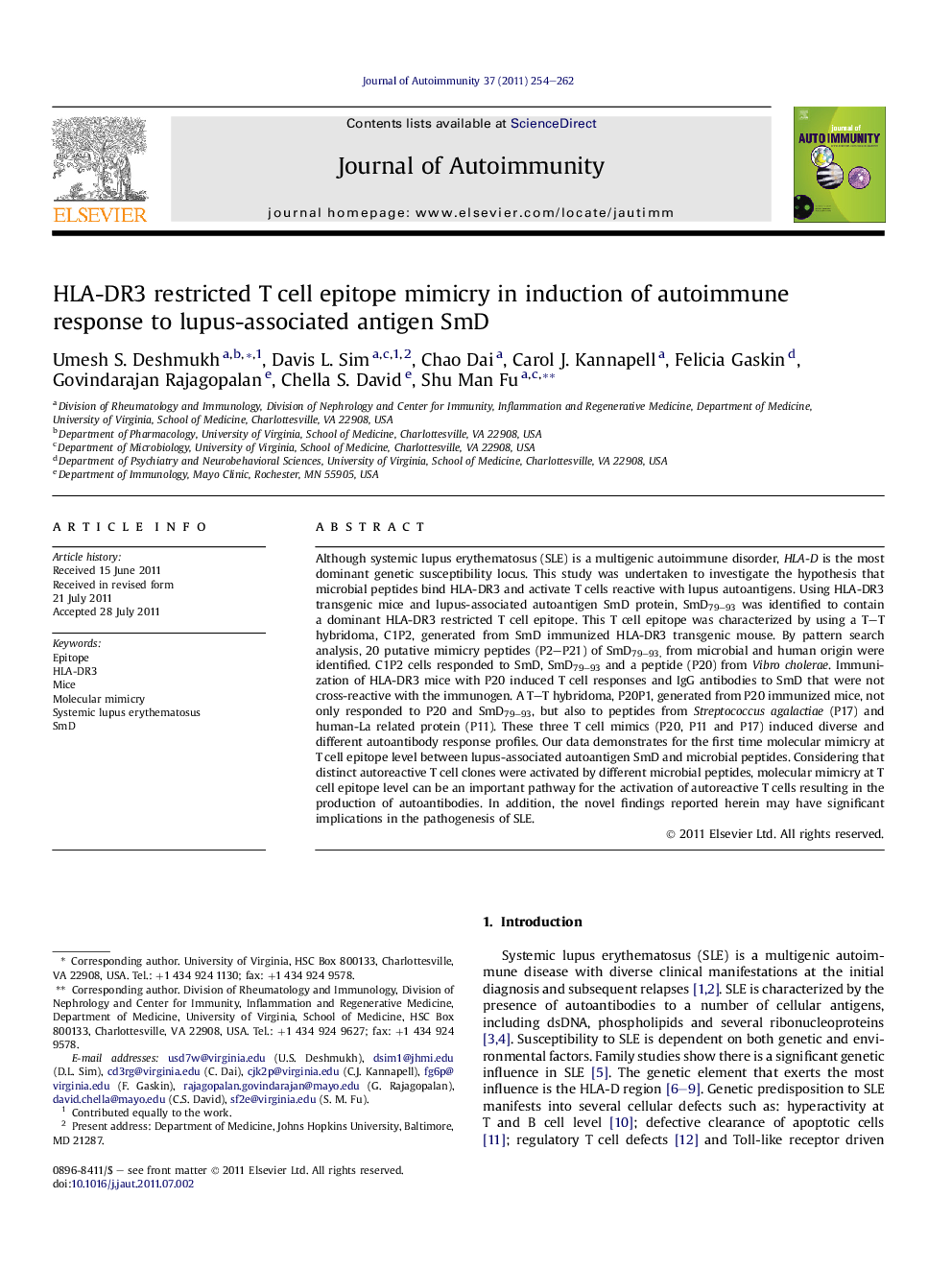| کد مقاله | کد نشریه | سال انتشار | مقاله انگلیسی | نسخه تمام متن |
|---|---|---|---|---|
| 3368016 | 1218763 | 2011 | 9 صفحه PDF | دانلود رایگان |

Although systemic lupus erythematosus (SLE) is a multigenic autoimmune disorder, HLA-D is the most dominant genetic susceptibility locus. This study was undertaken to investigate the hypothesis that microbial peptides bind HLA-DR3 and activate T cells reactive with lupus autoantigens. Using HLA-DR3 transgenic mice and lupus-associated autoantigen SmD protein, SmD79–93 was identified to contain a dominant HLA-DR3 restricted T cell epitope. This T cell epitope was characterized by using a T–T hybridoma, C1P2, generated from SmD immunized HLA-DR3 transgenic mouse. By pattern search analysis, 20 putative mimicry peptides (P2–P21) of SmD79–93, from microbial and human origin were identified. C1P2 cells responded to SmD, SmD79–93 and a peptide (P20) from Vibro cholerae. Immunization of HLA-DR3 mice with P20 induced T cell responses and IgG antibodies to SmD that were not cross-reactive with the immunogen. A T–T hybridoma, P20P1, generated from P20 immunized mice, not only responded to P20 and SmD79–93, but also to peptides from Streptococcus agalactiae (P17) and human-La related protein (P11). These three T cell mimics (P20, P11 and P17) induced diverse and different autoantibody response profiles. Our data demonstrates for the first time molecular mimicry at T cell epitope level between lupus-associated autoantigen SmD and microbial peptides. Considering that distinct autoreactive T cell clones were activated by different microbial peptides, molecular mimicry at T cell epitope level can be an important pathway for the activation of autoreactive T cells resulting in the production of autoantibodies. In addition, the novel findings reported herein may have significant implications in the pathogenesis of SLE.
► Identified T cell epitope mimics of lupus-associated autoantigen SmD.
► Demonstrated the potential of mimicry peptides in inducing autoimmune responses.
► Study provides plausible explanation for HLA-D association with SLE.
Journal: Journal of Autoimmunity - Volume 37, Issue 3, November 2011, Pages 254–262